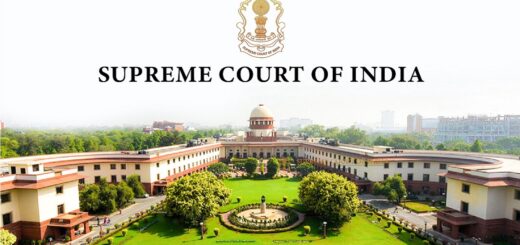Family Court’s Jurisdiction Defines High Court Bench for Transfer Requests: Allahabad HC.

The Allahabad High Court has made it clear that the areas where a Family Court has authority will decide where to file a request for transferring ongoing cases. The Court denied a transfer request from a wife who wanted to move her matrimonial case from the Family Court in Lucknow to the District Court in Bareilly. The Court stated that the request could not be accepted at the Principal Seat because the case was under the jurisdiction of the Lucknow Bench. Justice Kshitij Shailendra explained that the establishment of a Family Court is based on a notification from the State Government that defines its local area. A Family Court is treated like a District Court, and according to Section 2(4) of the Code of Civil Procedure, a District Court’s authority is limited to its local area. Therefore, the areas where a Family Court operates will determine where to file transfer requests for cases in those regions.
Advocate Sandeep Kumar represented the Applicant. The wife argued that since part of the issue occurred within the Principal Seat’s area, her transfer request should be valid. However, the Stamp Reporting Section objected, saying the case fell under the Lucknow Bench’s jurisdiction. The High Court observed that similar transfer requests often mentioned “part of cause of action” or “forum convenience” to support filing at the Principal Seat, relying on the interpretation of sub-clause (2) of Article 226 of the Constitution, which grants jurisdiction for Writ Petitions.
The Court stated that to determine if transfers in matrimonial cases are based on the convenience of the parties or other factors like the temporary or permanent residence of one party or ongoing cases in different districts, the provisions of the Code of Civil Procedure, 1908, along with the Family Courts Act, 1984, must be considered. If not, confusion about territorial jurisdiction will persist.
The Bench observed that when arguing for transfers based on Forum Convenience or the cause of action, it is often pointed out that since there is only one High Court in Uttar Pradesh, all Family Courts fall under its authority. Therefore, transfer applications can be submitted to either the Principal Seat of the High Court or its Lucknow Bench. The Court clarified that sub-section (1) of Section 23 indicates that the subordination of courts in transfer matters should be viewed in the context of the Appellate Court. The Court referenced the Supreme Court’s ruling in Shah Newaz Khan v. State of Nagaland, which stated that when multiple courts with jurisdiction are under one appellate court, a transfer application can be made to that appellate court, which can then move a case from one subordinate court to another.
The Court noted that based on the discussion of various sections of the CPC and the Family Courts Act, it believes that the Lucknow Bench is the right appellate court to handle appeals from Family Courts in its jurisdiction. Therefore, any transfer application for a case in that area should be submitted to the Lucknow Bench, not to the main court in Allahabad, as that would not be appropriate. As a result, the High Court denied the Transfer Application.
Cause Title: S v. P (Neutral Citation: 2024:AHC:175744)








